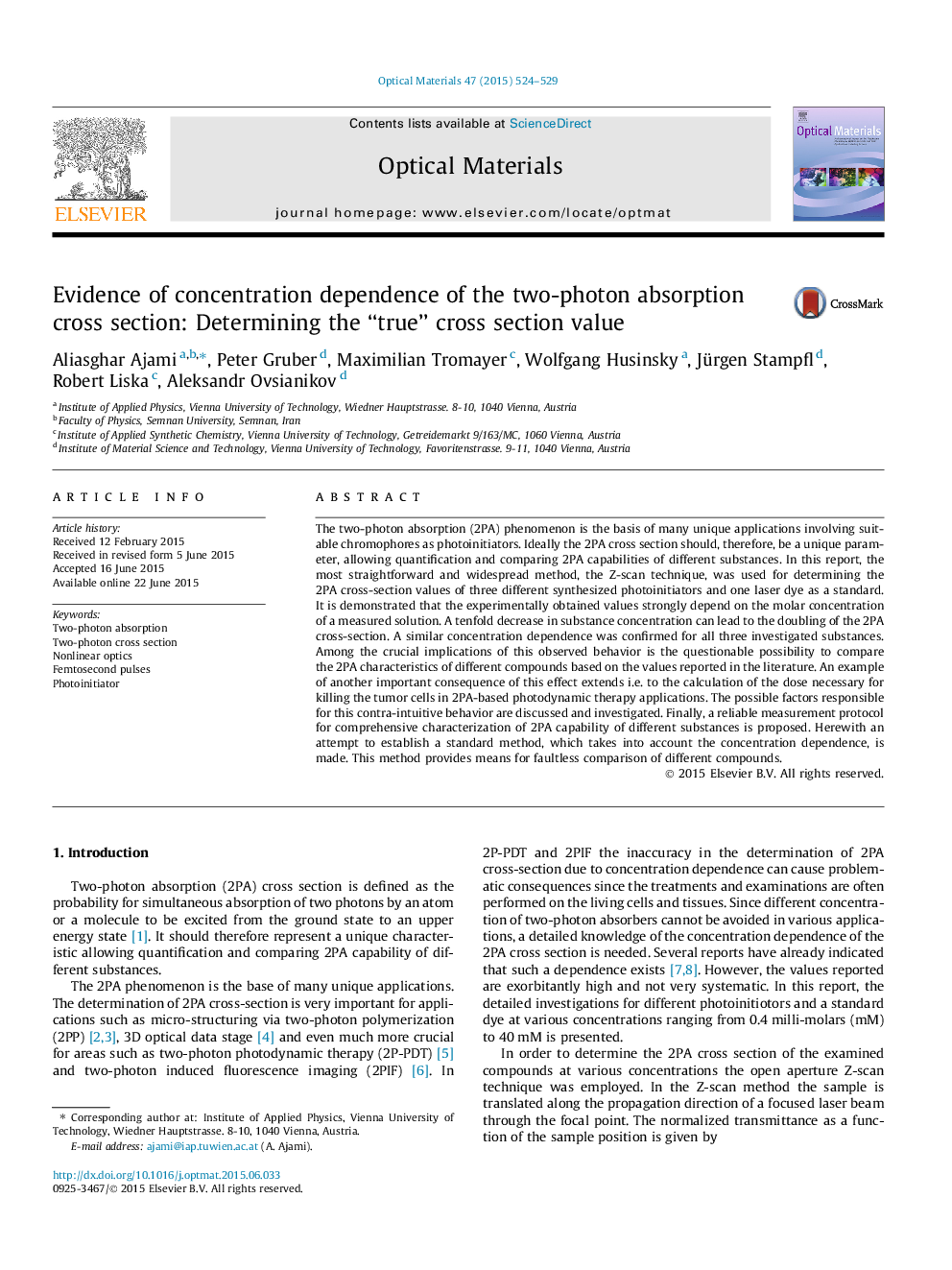| Article ID | Journal | Published Year | Pages | File Type |
|---|---|---|---|---|
| 1493750 | Optical Materials | 2015 | 6 Pages |
•Three different 2PIs were used to investigate the effect of concentration on 2PA cross section.•The results showed that the 2PA cross section of solutions decreases with concentration.•This behavior is ascribed to the screening effect due to the formation of large aggregates.•It is recommended to use lower concentration to reduce the effect of aggregation phenomenon.•The concentration should be adjusted so that the measured 2PA cross section shows no intensity dependent.
The two-photon absorption (2PA) phenomenon is the basis of many unique applications involving suitable chromophores as photoinitiators. Ideally the 2PA cross section should, therefore, be a unique parameter, allowing quantification and comparing 2PA capabilities of different substances. In this report, the most straightforward and widespread method, the Z-scan technique, was used for determining the 2PA cross-section values of three different synthesized photoinitiators and one laser dye as a standard. It is demonstrated that the experimentally obtained values strongly depend on the molar concentration of a measured solution. A tenfold decrease in substance concentration can lead to the doubling of the 2PA cross-section. A similar concentration dependence was confirmed for all three investigated substances. Among the crucial implications of this observed behavior is the questionable possibility to compare the 2PA characteristics of different compounds based on the values reported in the literature. An example of another important consequence of this effect extends i.e. to the calculation of the dose necessary for killing the tumor cells in 2PA-based photodynamic therapy applications. The possible factors responsible for this contra-intuitive behavior are discussed and investigated. Finally, a reliable measurement protocol for comprehensive characterization of 2PA capability of different substances is proposed. Herewith an attempt to establish a standard method, which takes into account the concentration dependence, is made. This method provides means for faultless comparison of different compounds.
